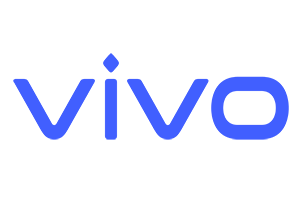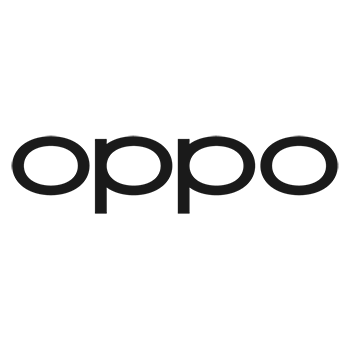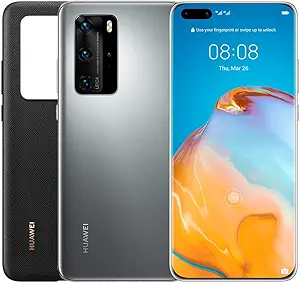In the realm of smartphones, two tech giants stand at the forefront of innovation, each wielding their unique arsenal of features and functionalities. Apple, with its iconic iPhones, and Huawei, renowned for its cutting-edge devices, offer consumers a diverse array of options tailored to varying preferences and needs. Delving into the intricacies of these two powerhouse brands reveals a fascinating comparison of design philosophies, performance capabilities, and ecosystem integration. Join us as we navigate the landscape of Apple and Huawei smartphones, uncovering the strengths and nuances that set them apart in this ever-evolving industry.
Key Features Comparison
Product Selection
Apple and Huawei stand as two prominent contenders in the smartphone arena, each presenting an extensive array of offerings tailored to diverse consumer demands and inclinations. Apple's mobile devices, housed within the internationally acclaimed iPhone series, exhibit a more focused product lineup. The latest iterations, including the iPhone 12 Mini, iPhone 12, iPhone 12 Pro, and iPhone 12 Pro Max, present varying attributes and dimensions while upholding a uniform user experience facilitated by the iOS operating system. This coherence serves as a pivotal selling point for Apple, fostering effortless compatibility with other Apple peripherals and services. Nevertheless, the constrained product assortment may not fully accommodate all consumer preferences, particularly those yearning for greater personalization and assortment. Conversely, Huawei's mobile devices proffer a broader selection, encompassing budget-friendly alternatives such as the Huawei Y series and premium models exemplified by the Huawei Mate and P series. Huawei's cutting-edge technology, exemplified by the HarmonyOS, endeavors to furnish a cohesive and adaptable user experience across a spectrum of devices. Such versatility and breadth in product offerings cater to a wider demographic. However, Huawei's expansive product portfolio might overwhelm certain consumers, and the recent regulatory constraints imposed by the US government have impinged upon Huawei's access to Google services, presenting a potential drawback for certain users. In comparison to Apple, Huawei's product lineup boasts greater diversity but may lack the uniformity and seamless integration synonymous with Apple's offerings.
Design/Look
When it comes to the design and look of smartphones, both Apple and Huawei have their unique styles and aesthetics. Apple smartphones, particularly the latest models like the iPhone 12 Pro Max, are known for their sleek, minimalist design, featuring a ceramic shield front cover, stainless steel edges, and a glass back. The iPhone 12 Pro Max also introduces the flat-edge design, which is a throwback to the iPhone 4 and 5 models, but with a more refined and modern look. The design of Apple smartphones is often seen as a status symbol, and they are praised for their premium feel and durability. On the other hand, Huawei smartphones, such as the Huawei P40 Pro, offer a different approach to design. They are known for their innovative and futuristic design, featuring a quad-curve overflow display that gives the illusion of a borderless screen. Huawei also experiments with different materials and finishes for their smartphones, offering a variety of colors and textures, such as the matte finish on the P40 Pro, which is not only visually appealing but also resistant to fingerprints. However, some users find Huawei's design to be less consistent than Apple's, as the company often changes its design language with each new model. Despite this, Huawei smartphones are appreciated for their bold and distinctive look, which sets them apart from other brands.
Affordability
In terms of pricing, Apple mobile devices typically command a higher price point compared to Huawei counterparts. The latest iterations from Apple, exemplified by the iPhone 12 Pro Max, are priced in the range of $1,099 to $1,399, contingent upon the storage capacity selected. This elevated price is often justified by Apple's forefront technology, superior craftsmanship, and the seamless fusion of hardware and software. Nonetheless, the exorbitant cost may serve as a deterrent for certain consumers, particularly those mindful of their budget or those not necessitating the advanced functionalities Apple provides. Conversely, Huawei mobile devices offer a more budget-friendly spectrum of choices. Take, for example, their latest flagship model, the Huawei P40 Pro, priced approximately between $800 to $900. Despite the lower price bracket, Huawei mobile devices do not compromise on technological prowess. They boast impressive attributes such as high-fidelity cameras, extensive battery longevity, and robust processors. However, due to ongoing trade restrictions, Huawei smartphones lack integration with Google services, constituting a notable drawback for users reliant on Google applications. By comparison, while Apple mobile devices may entail a higher price tag, they present a more encompassing package concerning software and service provisions.
Quality/Durability
Apple and Huawei emerge as two of the foremost contenders in the global smartphone landscape, distinguished by their commitment to crafting devices of exceptional quality and longevity. Apple's mobile devices, particularly the latest iterations exemplified by the iPhone 12 Pro Max, enjoy widespread acclaim for their rugged construction. They showcase a Ceramic Shield front facade, delivering a fourfold improvement in drop resistance, alongside aerospace-grade stainless steel borders that substantially augment their sturdiness. Nonetheless, Apple products generally carry a higher price tag, potentially dissuading certain consumers. Conversely, Huawei smartphones, such as the Huawei P40 Pro, also tout remarkable resilience. Constructed with an Aluminum chassis and fortified glass front and rear panels, they exhibit formidable durability and resistance to damage. Huawei devices further distinguish themselves with their water and dust resistance capabilities. Furthermore, Huawei mobile devices typically present a more economical option compared to Apple's offerings, rendering them a more accessible choice for numerous consumers. However, owing to ongoing complications with the U.S. government, Huawei phones lack access to Google services, constituting a noteworthy drawback for some users. Concerning durability, both brands showcase comparable standards, yet the selection between the two often hinges on individual preferences and financial considerations.
Reputation
Apple smartphones, particularly the iPhone series, have a well-established reputation in the global market. Known for their sleek design, user-friendly interface, and high-quality camera, Apple smartphones are often associated with innovation and quality. The brand's reputation is further bolstered by its proprietary iOS operating system, which offers a seamless and secure experience across all Apple devices. However, Apple smartphones are often criticized for their high price point and the company's restrictive policies on app installation and customization. Despite these criticisms, Apple continues to be a leading player in the smartphone industry, maintaining a loyal customer base and consistently receiving positive reviews for its latest models, such as the iPhone 12 and iPhone 12 Pro. On the other hand, Huawei smartphones have been making significant strides in the market, particularly in regions like Asia and Europe. Huawei's reputation is built on offering high-quality devices at a more affordable price point than its competitors. The brand's smartphones are known for their impressive hardware specifications, including powerful processors and advanced camera systems. Huawei's EMUI, based on Android, is also praised for its customization options and user-friendly design. However, Huawei's reputation has been affected by political issues, particularly in the US, where it faces restrictions due to concerns over data security. Despite these challenges, Huawei has managed to maintain its position as a competitive brand in the global smartphone market, with devices like the Huawei P40 Pro and Mate 40 Pro receiving positive reviews.
Customer Support & Warranty
Apple's customer support for their smartphones is widely recognized as one of the best in the industry. They offer a variety of support options, including phone support, live chat, email support, and in-person support at Apple Stores through the Genius Bar and Apple Authorized Service Providers. Apple's support website and app also provide comprehensive self-help resources, including user guides, troubleshooting articles, and community forums. In addition, Apple offers AppleCare+, a premium support and warranty service that provides priority access to Apple experts, hardware coverage, and software support. However, AppleCare+ comes with an additional cost and may not be affordable for all users. On the other hand, Huawei's customer support for their smartphones has seen significant improvements over the years. They offer phone support, live chat, and email support, as well as self-help resources on their website. Huawei also has service centers in various locations for in-person support. However, their support coverage may not be as extensive as Apple's, especially in Western countries. Huawei's support services are generally free, but they may not provide the same level of expertise and responsiveness as Apple's, especially for more complex issues. Furthermore, the recent restrictions on Huawei by the US government have raised concerns about the availability and quality of their customer support, particularly for users outside of China.
Battery Life
Apple smartphones, specifically the iPhone 12 Pro Max, are equipped with a 3687mAh battery. This is a significant improvement from previous models, and Apple's optimization of its iOS operating system allows the device to have a longer battery life. The iPhone 12 Pro Max can last up to 20 hours of video playback, which is impressive for a smartphone. However, the battery life can be significantly reduced when using 5G. Apple's fast charging technology also allows the iPhone to charge up to 50% in around 30 minutes with a 20W adapter or higher, which is sold separately. On the other hand, Huawei smartphones, particularly the Huawei Mate 40 Pro, come with a larger 4400mAh battery. This device can last up to 2 days of moderate use, which is a significant advantage over many smartphones in the market, including Apple's. The Huawei SuperCharge technology also allows the device to charge up to 66% in just 30 minutes, which is faster than Apple's fast charging. However, Huawei's battery life can also be affected by the use of 5G. Comparatively, Huawei smartphones generally offer a longer battery life than Apple smartphones, thanks to their larger battery capacity and efficient power management system.
Sound Quality
Apple smartphones, particularly the recent models such as the iPhone 12 Pro Max, are renowned for their excellent sound quality. The iPhone 12 Pro Max features a built-in stereo speaker system that delivers a balanced, immersive sound experience. It also supports spatial audio, which creates a three-dimensional sound field for a more engaging listening experience. The Dolby Atmos technology incorporated in these devices enhances the audio quality even more, providing crisp and clear sound. However, the lack of a 3.5mm headphone jack in the newer models might be a disadvantage for some users who prefer wired headphones. On the other hand, Huawei smartphones, such as the Huawei P40 Pro, also offer impressive sound quality. The P40 Pro features an Acoustic Display Technology, which uses the screen as a speaker, providing a unique and immersive audio experience. It also includes a 3.5mm headphone jack, which is a plus for users who prefer traditional wired headphones. However, while the sound quality is good, it may not be as balanced or immersive as the audio experience offered by Apple smartphones. Huawei does not support spatial audio or Dolby Atmos technology, which might make the sound seem less dimensional compared to Apple smartphones.
Display
When it comes to the display aspect of smartphones, both Apple and Huawei have their own unique strengths. Apple smartphones, particularly the latest models like the iPhone 12 Pro Max, feature Super Retina XDR displays. This OLED technology provides high brightness, deep blacks, and an incredible 2,000,000:1 contrast ratio. The HDR10 and Dolby Vision support further enhances the viewing experience by providing greater detail in both dark and bright areas of the picture. However, Apple's displays are not typically the highest resolution in the market, with the iPhone 12 Pro Max offering a resolution of 2778 x 1284 pixels. On the other hand, Huawei smartphones, such as the Huawei Mate 40 Pro, utilize OLED displays as well but with higher resolution. The Mate 40 Pro, for instance, has a resolution of 2772 x 1344 pixels, slightly higher than that of the iPhone 12 Pro Max. Huawei also incorporates a 90Hz refresh rate in their displays, which makes scrolling and animations smoother compared to the standard 60Hz refresh rate in Apple smartphones. However, Huawei's display technology lacks the HDR10 and Dolby Vision support found in Apple's devices, which may result in less dynamic range in the display. Overall, both brands offer high-quality display technologies, but the choice between the two would depend on the user's specific preferences.
Performance
Apple smartphones, particularly the latest models such as the iPhone 12 Pro Max, are powered by the A14 Bionic chip, which is currently one of the fastest processors in the smartphone market. This chip, built on a 5-nanometer process, has a 16-core Neural Engine that is capable of performing 11 trillion operations per second, resulting in improved performance for tasks involving machine learning and artificial intelligence. Apple's iOS operating system is also optimized to work seamlessly with the hardware, resulting in smooth performance even with multiple apps running simultaneously. However, Apple smartphones tend to be significantly more expensive than other brands, and the lack of customization options can be a disadvantage for some users. On the other hand, Huawei smartphones, such as the Huawei Mate 40 Pro, are equipped with the Kirin 9000 chip, which is also built on a 5-nanometer process. This chip includes an 8-core CPU and a 24-core GPU, which provide strong performance for tasks such as gaming and video editing. Huawei's EMUI operating system, based on Android, offers more customization options than iOS. However, due to the ongoing US-China trade war, Huawei smartphones do not have access to Google services, which can be a major drawback for users who rely on apps like Google Maps and Gmail. Additionally, while the performance of Huawei smartphones is generally good, they may not be as consistent as Apple smartphones, particularly when running multiple apps at the same time.
Camera Quality
When it comes to camera quality, both Apple and Huawei smartphones have their strengths. Apple smartphones, particularly the iPhone 12 Pro Max, are renowned for their advanced camera systems. The iPhone 12 Pro Max features a triple-lens rear camera setup with 12MP ultra-wide, wide, and telephoto lenses. It also includes a Night mode, Deep Fusion, and Smart HDR 3 for stunning low-light and detailed photography. Moreover, Apple's computational photography features like ProRAW and Pro Video formats give users more control over their photos and videos. On the other hand, Huawei smartphones, especially the Huawei P40 Pro, offer exceptional camera capabilities. The P40 Pro boasts a Leica quad-camera system with a 50MP Ultra Vision camera, 40MP ultra-wide cine camera, 12MP SuperSensing telephoto camera, and a 3D depth-sensing camera. Additionally, Huawei's XD Fusion Engine powered by the upgraded ISP and NPU is capable of swiftly processing the massive amount of data produced by the multi-sensor camera setup, ensuring comprehensive image optimization. However, Huawei's image processing tends to be more aggressive, which can sometimes result in oversaturated photos. In comparison to Apple, Huawei smartphones offer more camera features and higher resolution, but the color accuracy and consistency across lenses are often better on Apple smartphones.
Conclusion
As we draw the curtains on our exploration of Apple and Huawei smartphones, it's evident that both brands bring a wealth of innovation and expertise to the table. Whether you're drawn to the timeless elegance of iPhones or the cutting-edge features of Huawei devices, there's no shortage of options to suit every taste and preference. From design aesthetics to performance capabilities and camera technology, the competition between Apple and Huawei continues to drive innovation and push the boundaries of what's possible in the world of smartphones. Ultimately, the choice between an iPhone and a Huawei smartphone boils down to individual priorities and preferences, but one thing is certain: with these two tech titans at the helm, the future of mobile technology looks brighter than ever.

















